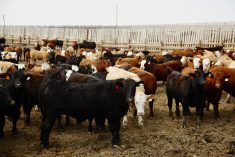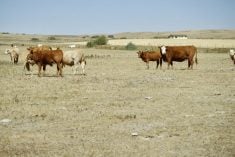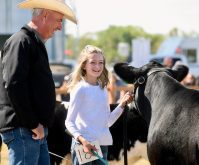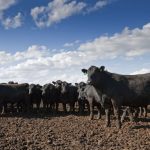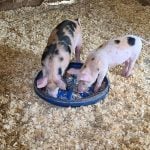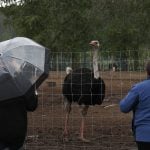Fed cattle
The fed cattle market held up through the summer, with recent weeks trading between $174.18/cwt and $175.32/cwt. Strong seasonal demand heading into barbeque season as well as restaurant and food service beef movement recovering to pre-pandemic levels have supported prices. At mid-July, the fed steer average in Western Canada was $175.06/cwt, an increase of $7.73/cwt higher than the start of 2022 and $22.87/cwt above the same week in 2022. The fed steer cash-to-cash basis remains wide, at -$12.51/cwt in mid-July. This is $12.48/cwt wider than a year earlier.
Steer carcass weights decreased recently. During the first five months of 2022 the steer carcass weight averaged 928 lbs., then dropped to 882 lbs. in June and the first part of July.
Read Also
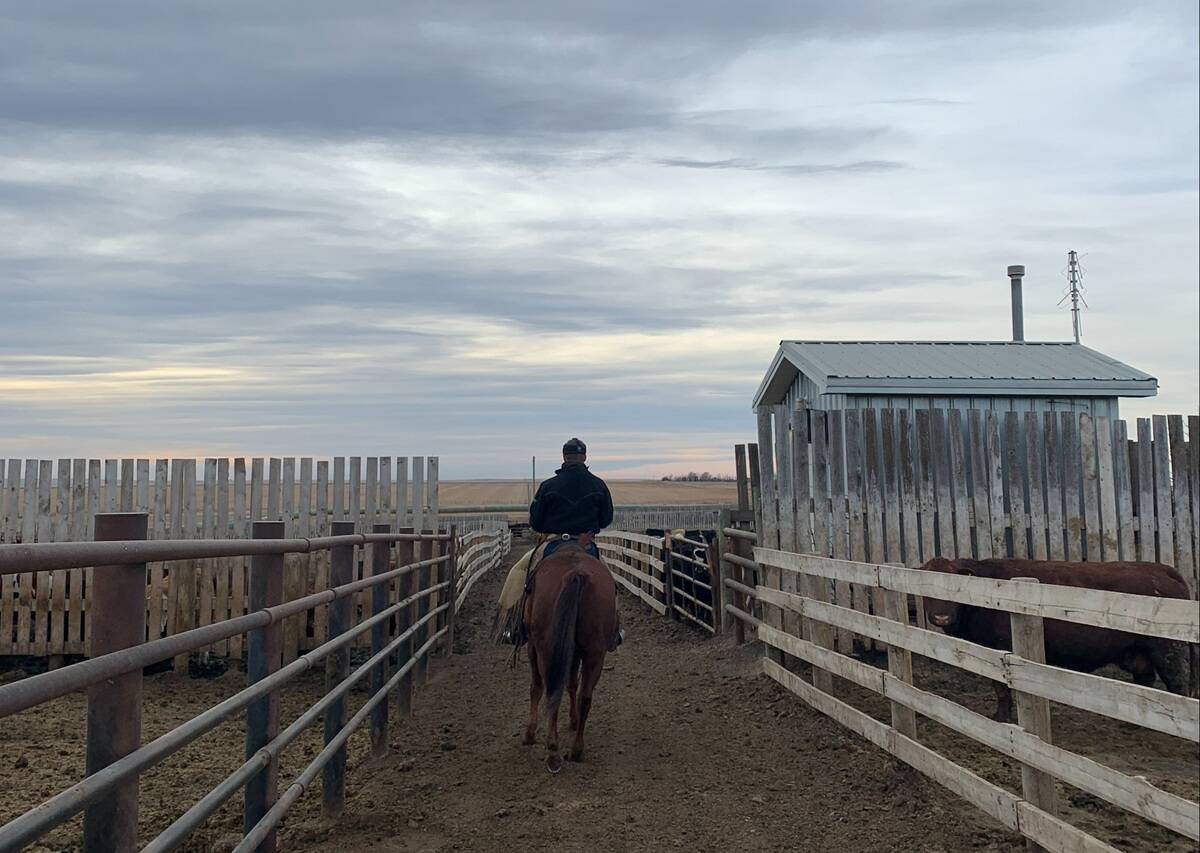
Pen riders still better than tech at detecting respiratory disease in feedlot cattle, says researcher
Recent research found that pen riders are better than tech at flagging signs of BRD in feedlot cattle
The drought of 2021 put more cattle directly onto feed as forage shortages limited backgrounding opportunities. The result was a larger number of fed cattle processed in the first half of 2022, and beef production to the end of June was three per cent larger than last year. Domestic steer slaughter to the end of the first week in July was two per cent ahead of last year at 879,778 head while heifer kill was also up two per cent at 572,504 head. Exports of fed cattle to the United States, including cows, through the first half of the year were 22 per cent larger at 255,271 head.
Alberta and Saskatchewan are still reporting cattle-on-feed numbers larger than a year ago. On July 1, the on-feed total was 985,992 head, which is five per cent larger than last year. Smaller placements were recorded, down 21 per cent. However, some of that would be attributed to the lack of drought placements that were seen in 2021.
Deb’s outlook for fed cattle: It will be important to keep our eyes on our beef customers as inflation coupled with interest rate hikes and recession talk affects spending habits and threatens domestic beef consumption. In the near term, front-end beef supply seems current, which should help with the third-quarter market sluggishness that is typical through August and September. Packers are reasonably comfortable with already procured inventory, which is also reflected in set pickup dates leading to some typical late summer pressure in the fed market.
Drought changed placement and marketing patterns over the past year, which should leave fewer cattle on feed through the last half of 2022. The lighter supply will support fed prices as we move through the end of the year.
Feeder cattle
Weakening feed grain prices in both new and old crop in recent weeks, coupled with good pasture conditions across much of the Prairies, supported feeder cattle prices.
The yearling market has seen a steady climb since mid-May.
The 850-lb. steer average reached a new annual high the second week of July at $206.63/cwt, before dipping to $204.75/ cwt. However, this time of year the volume and quality can vary a lot week to week, having an impact on the price. When compared to a year ago, the mid-July 850-lb. steer average is $12.12/cwt higher. The 850-lb. feeder basis continues to be wide, at -$29.78/cwt, nearly $24/cwt wider than the same week in 2021.
Volumes of light-weight calves on offer this time of year is small and quality mixed. However, the 550-lb. steer price also saw a new annual high in July, with the mid-month average of $238.33/cwt. This is $7.75/cwt higher than the same week in 2021.
Feeder exports in 2022 continue to outpace last year, an increase of 81 per cent with a total of 133,712 head exported as of mid-July.
Deb’s outlook for feeder cattle: Demand for yearlings will be competitive. Prices should climb into August. For the lighter-weight calves, smaller volumes on offer through August should hold steady. Expectations for a smaller feeder cattle supply in North America should support a strong fall run, but as always, other factors may weigh in on the market. Watch for signals from consumers as inflation takes a toll on spending. As well, watch grain markets as harvest gets underway. Globally we need to keep an eye on everything from COVID-19 to the ongoing Russian invasion of Ukraine’s effect on grain markets.
Non-fed cattle
Even with improved pasture conditions and forage supplies stacked up for winter, volumes of cull cows available have not slowed as expected. Cow slaughter in Canada is up five per cent to total 242,154 head to date. Prices have been well supported by both domestic and export demand. The D1,2 cow price has been strong, a 44 per cent increase since the start of the year. The mid-July cow average is $107/cwt, the highest seen since 2017.
Butcher bull prices have also increased. Local and export demand pushed butcher bull prices to $134.36/cwt by mid-July, an increase since the start of the year of over $35/cwt. That average is $19.44/cwt higher than the same week in 2021. Export demand has been strong for bulls. As of mid-July, exports were up 17 per cent to 17,628 head. Meanwhile, domestic slaughter is lower, down 19 per cent at 7,338 head.
Deb’s outlook for non-fed cattle: There should be fewer cows marketed in the third and fourth quarter compared to a year ago as current moisture conditions suggest ample forage for the winter. As well, many producers culled hard last winter. A smaller North American cow herd will reduce the available supply. Cow prices will likely be well supported through the remainder of the summer. Then the typical fall run pressure will apply as cows come off grass.





